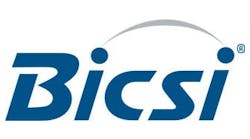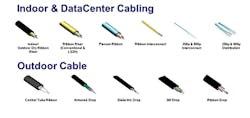Global data center IP traffic is expected to reach 15 trillion gigabytes by 2020 — a more than threefold increase from the 4.7 trillion gigabytes in 2015 (Cisco Global Cloud Index: 2015–2020). To meet this demand — and to ensure the progress of technology-driven productivity, the Internet of Things, 5G and so much more — data centers are rapidly adopting new technologies and continually innovating in order to deliver the highest levels of performance, quality, and security.
[pullquote]"As traffic grows and new innovations — such as the important trend of edge computing — take hold, the industry relies heavily on the global and cross-sector interoperability that is provided by broadly accepted standards." [/pullquote]
But of course, this progress wouldn’t be possible if the equipment design, connectors, and protocols, of one data center were entirely different from another. As traffic grows and new innovations, such as the important trend of edge computing, take hold, the industry relies heavily on the global and cross-sector interoperability that is provided by broadly accepted standards. Standards are particularly important for managing the complicated infrastructure that sits behind the slick façade of the modern server, and that is an essential factor in ensuring data center efficiency, capacity, and flexibility.
But this wasn’t always the case; the first data center cabling standard was published only in 2005. In just a few short years, it has become a critical tool for network designers, architects, data center managers, and owners — providing them with indispensable guidance for building, operating, and maintaining, storage facilities that can keep up with massive demand.
The need for standards came about as data centers grew in sophistication, importance, and capacity. Among the many infrastructure challenges operators faced was that most cables were essentially single use, with a unique cable (some almost an inch thick) connecting each peripheral. This approach became unsustainable as rapidly developing technologies, skyrocketing data usage, and an increasingly connected society, called for a more sophisticated level of organization.
Collaboration Is the Key
Recognizing this, more than 500 industry leaders came together through the Telecommunications Industry Association (TIA) to develop ANSI/TIA-942 — the first data center telecommunications infrastructure standard. The participants worked to create a standard that would help data center architects and designers incorporate structured cabling concepts early in the design process, thereby setting the stage for long-term success.
Collaboration is a cornerstone of all standards development — and it was particularly important in this case. The contributions received from manufacturers, service providers, government agencies, academic institutions, and end users, were instrumental in forging a standard that not only responded quickly to an urgent need, but that has proven highly effective.
The benefits of its structured cabling approach are many and significant:
• Capabilities for multiple applications, rather than installed for 1 application and then removed.
• A hierarchal structure that makes data centers easier to administer and troubleshoot.
• Easier ways to update, add, or remove equipment.
• Abilities to support higher speed protocols.
• Labeling and documentation protocols to reduce confusion.
• Cable specifications, such as lengths and types of topologies, to reduce single-use products.
• Improved reliability and efficiency through allowable pathways (cable trays, conduits, etc.) and room requirements (door sizes, lighting, temperature, floor loading, etc.).
• Increased energy efficiency
The standard’s topology is applicable to any size data center, and covers all physical infrastructure, including, but not limited to, site location, architectural, electrical, mechanical, fire safety, telecommunication, and security. It specifies the minimum requirements for telecommunications infrastructure of data centers and computer rooms, including single-tenant enterprise data centers and multi-tenant Internet hosting data centers.
Because of the need to keep up with rapidly advancing technology, the TR-42 committee is continually updating the standard and, as is the case with all standards development efforts, is actively engaging a wide range of new and existing industry participants. In fact, a substantial revision, TIA-942-B, was approved this past August. It includes several significant changes from the "A" version, including updates that address data center fabrics, connector types, allowed types of balanced twisted-pair cables, and allowable fiber types.
While it serves as a core roadmap for ensuring efficient, adaptable, and highly capable data centers, it is not the only cabling standard. The Building Industry Consulting Service International (BICSI) provides the BICSI-002 standard, which addresses requirements, recommendations, and additional information, that can be used when planning and building a data center. It serves as a complement to TR-942 by covering topics such as site selection, layout, thermal systems, and security.
These data center cabling standards are more than just efficiency-increasers and headache-reducers: they are building blocks toward an improved bottom line, contributing to higher performance and reduced risk for organizations of all sizes.
• A standards-based structured cabling system controls costs by making data center design and construction predictable, and by ensuring that future changes, upgrades, and fixes, can be done without the need for highly customized tools or personnel.
• It increases reliability and up-time by providing technology and methodology practices that are well-tested and widely accepted, and it lowers energy demand by building-in efficiency principles and best practices.
• And cabling standards promote flexibility and scalability that help make certain companies avoid the costly mistake of investing in a system they’ll quickly grow out of.
The efficiency and economic value of data center optimization will only continue to rise as next-generation mobile networks and sophisticated connected technologies produce ever-growing amounts of data — particularly as companies increasingly host applications outside of their own IT infrastructure.
As part of this, standards are helping data centers effectively adapt as edge computing, which places computing capabilities closer to where the data is first generated, becomes increasingly important. New protocols that allow the network core and edge to work together are needed, but these will be built on the existing foundation of well-established infrastructure standards and protocols. This new phase of smart infrastructure will allow data centers to continue enabling everything "smart" — smart communities, buildings, manufacturing, agriculture, transportation, to name a few.
Cabling standards have become an essential part of smart data center design. And smart data center design will be essential for allowing the industry to meet the reliability, scalability, and functionality demands of 15 trillion — or for that matter, 50 trillion — gigabytes of data.






